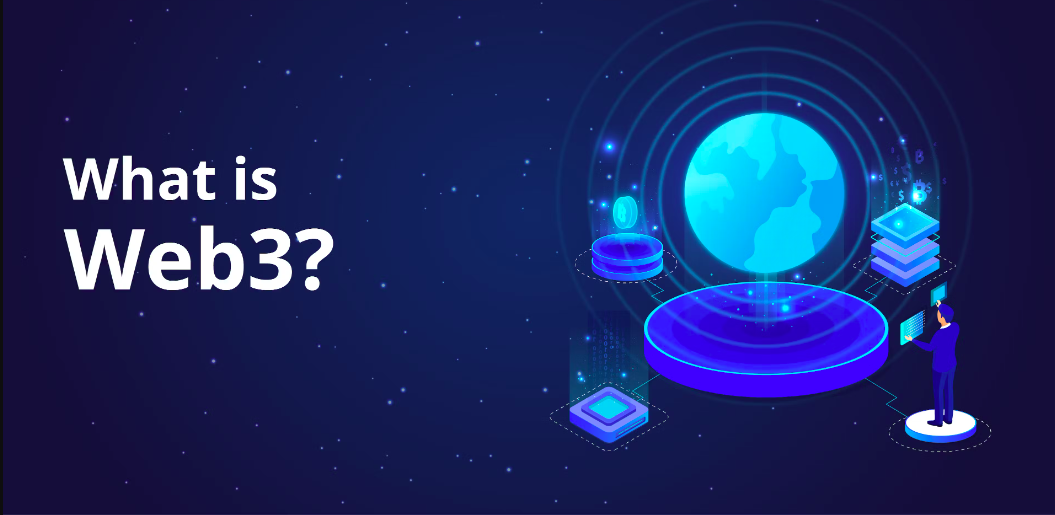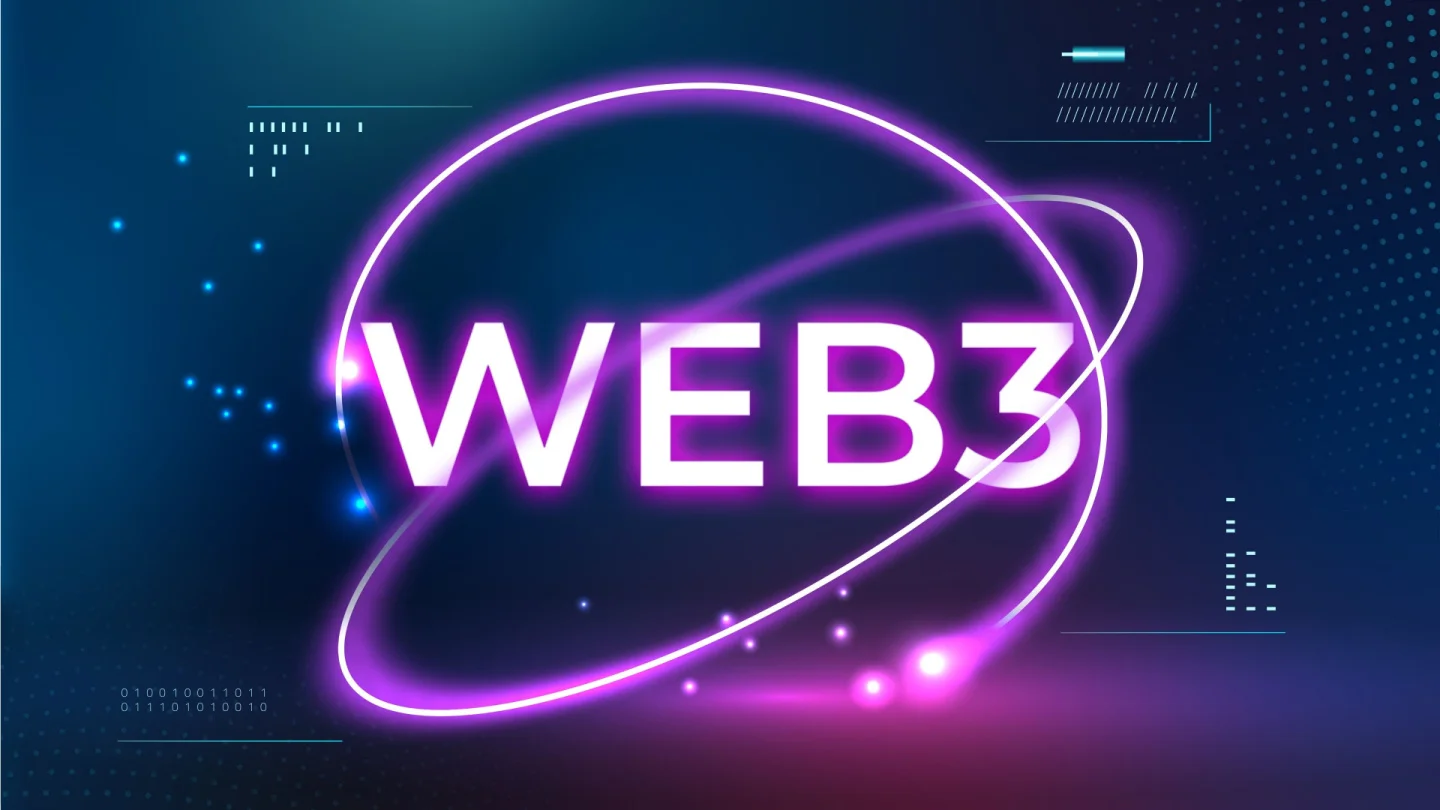Best web3 Crypto projects for beginners
In this blog post, we embark on a journey through the vast and dynamic realm of Web3 to uncover the best projects that have been turning heads and capturing imaginations worldwide. These projects aren’t just pieces of code; they represent the vanguard of innovation, embodying the principles of decentralization, transparency, and community governance.
So, buckle up as we delve into the exciting and groundbreaking world of Web3, exploring projects that are not only surviving but thriving in this brave new digital frontier. From blockchain-based ecosystems to decentralized finance (DeFi) platforms and beyond, these projects are at the forefront of reshaping the internet as we know it. Join us on this anniversary celebration as we shine a spotlight on the best Web3 projects that are defining the future of the online experience.

What is Web3?
Web3 refers to the next generation of the World Wide Web, characterized by a decentralized, peer-to-peer network that leverages blockchain technology. Unlike its predecessor, Web2, which relies heavily on centralized servers and intermediaries, Web3 aims to create a more trustless, transparent, and user-centric internet experience. It introduces concepts such as decentralized applications (DApps), smart contracts, and a variety of protocols to enable direct interaction between users without the need for intermediaries.
What is Web3 in cryptocurrency?
In the realm of cryptocurrency, Web3 signifies the integration of blockchain technology and decentralized principles into the architecture of the internet. This integration allows for the creation and execution of decentralized applications, the establishment of trust through consensus mechanisms, and the development of decentralized finance (DeFi) platforms. Web3 in cryptocurrency is synonymous with the shift towards a more inclusive, secure, and user-controlled digital ecosystem.
Best Web3 Projects to Watch in 2024
1. Polkadot (DOT):
Polkadot, envisioned as a transformative protocol, is a pioneering initiative aiming to interconnect diverse existing networks, fostering seamless interactions among various users and blockchains. Launched by Ethereum co-founder Gavin Wood and Peter Czaban, Polkadot emerges as a dynamic “network of networks,” with a primary focus on enhancing the underlying technology that propels Decentralized Applications (dApps).
The brainchild of Gavin Wood, who not only co-founded Ethereum but also introduced the term “Web3” in 2014, Polkadot represents a strategic leap forward in the quest for a more decentralized and interconnected internet. Notably, Wood went on to establish the Web3 Foundation three years after coining the term, solidifying his commitment to advancing the principles that underpin the Web3 vision.
At the core of Polkadot’s functionality lies a groundbreaking concept called parachains. These parachains, or Proof-of-Stake (PoS) blockchains, operate independently, allowing them to execute transactions and smart contracts autonomously. The relay chain serves as the linchpin, binding these parachains together, while concurrently upholding the security and interoperability of the entire Polkadot network.
In essence, Polkadot acts as a facilitator for networks to seamlessly communicate and collaborate, introducing a novel approach to interoperability in the Web3 ecosystem. As the brainchild of industry visionaries and with its innovative design anchored in parachains and a relay chain, Polkadot stands as a beacon for the future of decentralized connectivity in the ever-evolving landscape of blockchain technology.
2. Chainlink (LINK):
Chainlink emerges as a groundbreaking tech platform that serves as a vital bridge between non-crypto-related companies and various blockchains through off-chain data integration. At its core, Chainlink facilitates hybrid smart contracts, seamlessly combining on and off-chain computations. Originally built on the Ethereum blockchain, this open-source crypto project enables transparency and collaboration, allowing anyone to inspect its core and actively contribute to its development.
Launched in 2017, Chainlink operates as a blockchain-based decentralized oracle network. The platform’s native token, LINK, plays a pivotal role by compensating network operators and collateralizing the smart contract agreements that underpin Chainlink’s functionality.
3. Internet Computer (ICP):
Internet Computer Protocol (ICP) stands at the forefront of Web3 crypto projects, offering developers the tools to craft a diverse array of web-based services, including websites and applications. Developed by Dfinity, ICP’s primary objective revolves around decentralizing the web space, presenting a revolutionary shift in how online services are conceptualized and executed.
As an innovative force in the crypto world, Internet Computer Protocol swiftly garnered popularity among enthusiasts and continues to be a prominent player in the global cryptocurrency landscape. The allure of ICP lies in its ability to empower users, enabling them to build software on the internet in a decentralized and permissionless manner.
4. Filecoin (FIL):
Filecoin, introduced in 2021, represents a decentralized open-source protocol revolutionizing file-sharing and storage services by creating a global network of computers. Leveraging Proof of Work (PoW) as its consensus mechanism, Filecoin incentivizes users to mine FIL, contributing to the network and earning additional FIL rewards.
Free to join, Filecoin offers users the option to either rent out or purchase storage within the network. This innovative approach to decentralized storage introduces a new paradigm where users have control over their data, fostering a more secure and collaborative digital environment.
5. The Graph (GRT):
The Graph, an open-source crypto project built on the Ethereum blockchain, aims to democratize data access by collecting information from various networks and presenting it in an accessible format for global users. The platform organizes collected data into efficient structures called Subgraphs, enhancing the overall efficiency of data retrieval.
Operating on The Graph involves querying through decentralized applications (dApps) written in GraphQL, a specific programming language. The native token of The Graph, GRT, serves as a means of participation rewards on the platform. Users seeking data on The Graph also engage with GRT, as the token is used to access and unlock information within this decentralized data ecosystem.
ALSO SEE: Top 10 GameFi Projects To Watch
6. Render Network (RNDR):
Render Network stands as an innovative blockchain solution, empowering users to contribute unused GPU power to assist projects in rendering motion graphics and visual effects. The platform streamlines the rendering of 3D environments by creating a Peer-to-Peer (P2P) network. Through this network, users can tap into untapped computational power, expediting the completion of complex rendering tasks.
Operational under a Proof-of-Render (PoR) governance system, Render Network implements a multi-tier pricing model. Users can select from three tiers: Tier 1 (Trusted Partners), Tier 2 (Priority), and Tier 3 (Economy), tailoring their experience based on their rendering requirements and preferences.
7. Theta Network (THETA):
Theta Network emerges as a decentralized video delivery network, revolutionizing traditional video-streaming processes by providing high-quality video streaming at a reduced cost. This decentralized platform is accessible to users worldwide, offering an innovative solution to content distribution.
Users on Theta Network have the opportunity to earn THETA by sharing videos with other network participants. Leveraging Edgecast, a dedicated dApp developed by Theta Network, users can seamlessly engage in content transcription and distribution within the decentralized framework.
8. Stacks (STX):
Stacks, a layer-1 crypto project, was conceived to enhance the Bitcoin blockchain by introducing features like smart contracts and decentralized applications (dApps). This initiative aims to optimize Bitcoin-related processes while preserving the integrity of the broader Bitcoin network.
At the core of Stacks is its native token, STX, utilized for executing smart contracts, processing transactions, and registering new digital assets. Users have the unique opportunity to earn STX by exchanging previously mined BTC, offering a novel approach to token acquisition within the Stacks ecosystem. Noteworthy achievements include projects like ALEX, a Bitcoin DeFi platform, securing over $15M+ in total value locked as of October 2023, showcasing the potential unlocked by Stacks.
9. Conflux (CFX):
Conflux, a permissionless blockchain, sets itself apart through a unique fusion of Proof-of-Work (PoW) and Proof-of-Stake (PoS) mechanisms. Operating as a Layer-1 blockchain, Conflux employs a Tree-Graph structure, enabling concurrent processing of multiple blocks and significantly enhancing efficiency.
CFX, the native token of Conflux, serves various functions, allowing users to cover fees such as gas fees and storage expenses. Additionally, users can acquire CFX through staking or mining rewards, with staked tokens granting voting rights within the network.
10. Injective (INJ):
Injective Protocol takes center stage as a Decentralized Exchange (DEX) that not only facilitates cross-chain margin trading but also offers forex futures trading and derivatives. Operating on the Cosmos blockchain, Injective incorporates cross-chain bridges, enabling seamless acquisition of coins and tokens from diverse blockchains.
The Injective Protocol ecosystem comprises three key components: Injective Hub, Injective Chain, and Injective Exchange. These components synergize to provide users with a comprehensive platform, empowering them to trade cryptocurrencies from various blockchains in a decentralized and efficient manner.
Is Google using Web3?
Google has not fully embraced Web3 in its traditional services and products. However, it’s important to note that the technology landscape evolves rapidly, and companies may adapt to emerging trends over time. Google has expressed interest in blockchain and decentralized technologies, but specific implementations of Web3 principles in their services would require checking the latest updates from the company.
Does Web3 use C++?
Web3 development can involve various programming languages, and C++ is one of them. The choice of programming language depends on the specific blockchain or protocol being utilized. Ethereum, one of the prominent platforms in the Web3 space, allows developers to write smart contracts in languages like Solidity, which is specifically designed for the Ethereum Virtual Machine (EVM). However, C++ can be used in blockchain development for other projects or protocols that support it.
How do brands use Web3?
Brands are increasingly exploring ways to leverage Web3 technologies to enhance transparency, authenticity, and user engagement. Some common ways brands use Web3 include:
NFTs (Non-Fungible Tokens): Brands create and tokenize unique digital assets as NFTs, allowing for ownership, provenance, and monetization of digital content.
Decentralized Identity: Brands may adopt decentralized identity solutions to give users more control over their personal data and authentication.
Supply Chain Transparency: Using blockchain, brands can establish transparent and traceable supply chains, ensuring the authenticity and ethical sourcing of products.
Community Engagement: Web3 enables brands to involve their community in decision-making processes through decentralized governance mechanisms, fostering a sense of ownership and loyalty.
Tokenization of Assets: Brands can tokenize real-world assets, enabling
